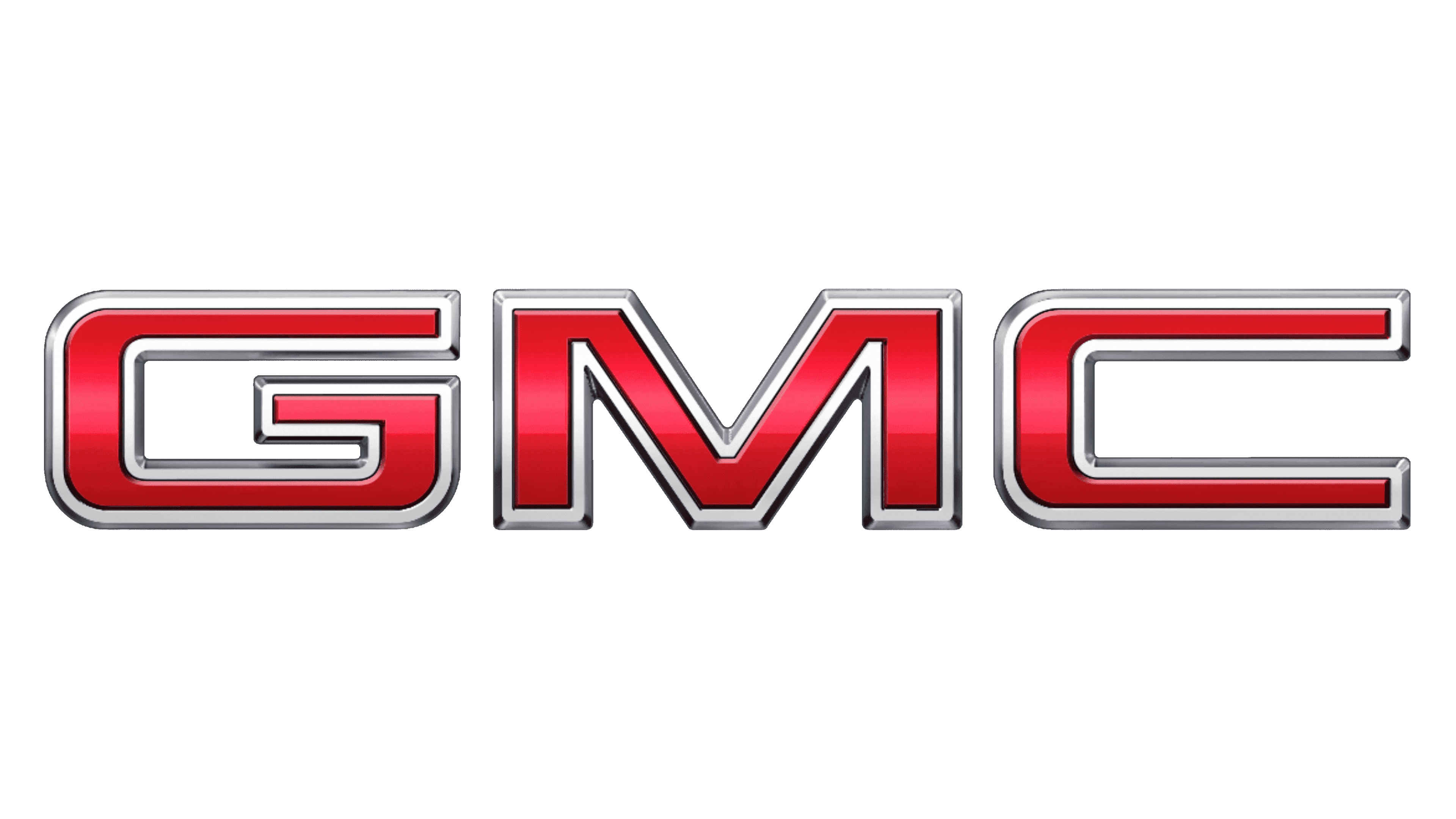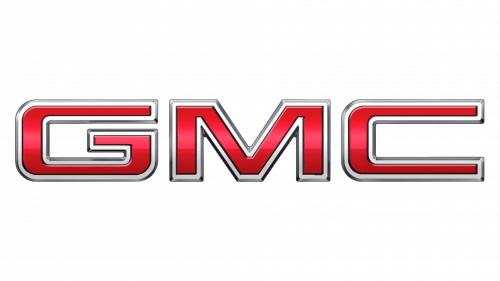GMC Logo
As an integral arm of General Motors, GMC is dedicated to the crafting of sturdy trucks, versatile SUVs, and a range of vehicles for commercial use. The brand has built a reputation for constructing vehicles that exude strength and exquisiteness, with a significant foothold in the North American territory and an expanding influence across international markets. The hallmark of GMC’s fleet is its resilience, incorporation of leading-edge technology, and the inclusion of upscale elements. Operating under the GM umbrella, GMC reaps the benefits of a comprehensive R&D framework, leading to trailblazing vehicle designs and sophisticated engineering. Models such as the Sierra and the Yukon have garnered acclaim, particularly from those who covet a fusion of functional prowess and opulence. With GM’s backing, GMC stands robustly in the fiercely competitive realm of automobile manufacturing.
Meaning and history
GMC, originally known as the Rapid Motor Vehicle Company, was founded in 1902 by Max Grabowsky. This venture pioneered in commercial truck manufacturing, leading to General Motors (GM) acquiring it in 1909, marking GMC’s inception. This acquisition signified GM’s expansion into the truck market.
In the early 20th century, GMC’s production primarily focused on trucks, with a brief foray into bus manufacturing. World War I and II were pivotal for GMC, as the company produced over 600,000 trucks for military use, showcasing its industrial might and technological advancement.
Post-World War II, GMC expanded its civilian market offerings, introducing models like the iconic GMC Suburban. The 1950s and 1960s witnessed GMC diversifying its lineup with pickups, vans, and medium to heavy-duty trucks, catering to a broader consumer base.
The 1970s and 1980s were challenging due to oil crises and increased competition. GMC responded by innovating in fuel efficiency and diversifying into the SUV market. The 1990s saw GMC solidifying its reputation in the luxury vehicle segment with the introduction of the Yukon and the Denali series, blending utility with luxury.
Entering the 21st century, GMC navigated the 2008 financial crisis, which severely impacted the automotive industry. Post-crisis, GM restructured, focusing on profitability and innovation. GMC benefited from this shift, emphasizing high-quality, luxurious, and technologically advanced vehicles.
In recent years, GMC has been part of GM’s push towards electrification. Announcing plans to introduce electric vehicles, GMC is adapting to the evolving automotive landscape. The GMC Hummer EV, for instance, marks a significant step in this direction, combining GMC’s traditional strength in trucks with cutting-edge electric vehicle technology.
What is GMC?
GMC stands as a distinguished sector of General Motors, focusing on the production of trucks, SUVs, and service vehicles renowned for their enduring build and opulent features. In the realm of automotives, GMC distinguishes itself by harmonizing cutting-edge tech with sturdy construction, targeting consumers who prioritize both high functionality and aesthetic appeal.
1911 – 1947
The logo features a circular badge, dominated by a striking orange hue, encapsulating the bold, capitalized letters “GMC,” signifying the brand’s identity. Below, “TRUCKS” is prominently inscribed, affirming the company’s specialization. The “GMC” inscription, stylishly designed with white and subtle shading, conveys a sense of sophistication. The font choice for “GENERAL MOTORS” encircling the top half is straightforward yet authoritative, representing the parent company’s oversight. The black outlines surrounding the orange backdrop and the white text create a strong contrast, making the design pop. The entire emblem embodies a classic aesthetic, reflecting the brand’s long-standing history and reliability in the automotive industry. This logo suggests a blend of tradition and commitment to quality, aimed at resonating with a customer base that values both heritage and excellence in vehicle manufacturing.
1947 – 1955
The logo presents a bold red color, with the large, capitalized letters “GMC” perched above a solid red bar that reads “TRUCKS”. The design is straightforward, with a sans-serif font that conveys simplicity and directness. Each letter in “GMC” has triangular cutouts, adding a slight design flair to an otherwise minimalist emblem. This logo’s use of a single, vibrant color and clear typography reflects a modern, confident brand.
Comparing this to the previous logo, the ornate details and the orange hue are replaced with a cleaner, more uniform red color scheme. Gone is the circular boundary, creating a more open and accessible feel. The previous logo’s vintage aesthetic gives way to a contemporary look, focusing on clarity and impact. The word “TRUCKS” underlines the company’s expertise, now more pronounced than before. This evolution in design mirrors a shift towards a more streamlined and bold brand identity, emphasizing strength and modernity in GMC’s brand image.
1955 – 1960
This logo is a monochromatic representation, using stark black to form the three letters “GMC” with a substantial underline. The bold, block-like font of the letters is robust, exuding strength and solidity. The underline sweeps beneath the letters, adding dynamism to the design. It’s a minimalist yet powerful design that communicates confidence and reliability.
Compared to the previous red logo, the use of black and white here marks a shift to even greater simplicity and perhaps suggests a return to basics in branding. The red logo’s vibrancy is replaced by the timeless elegance of black, and the removal of the word “TRUCKS” places full emphasis on the brand’s initials. The design foregoes color and additional text to rely solely on the strong typography to convey the brand’s identity. This change reflects a move toward a more streamlined and versatile branding approach, suitable for various applications while maintaining the brand’s authoritative presence.
1958 – 1967
The logo is a rectangular emblem featuring a two-toned design with the letters “GMC” in red at the top. Below, in a smaller font, “GENERAL MOTORS CORPORATION” is spelled out, dividing the space between the red and the black. The bottom half of the rectangle is black with the word “TRUCKS” in bold white letters, creating a stark contrast.
Compared to the previous black and white logo, this design reintroduces color with the red letters “GMC” grabbing attention. The explicit mention of “GENERAL MOTORS CORPORATION” adds a formal and corporate feel, distinguishing it from the simpler, earlier designs. The black bottom section with “TRUCKS” provides a grounding effect, emphasizing the brand’s focus on truck manufacturing. This logo balances the need for corporate branding with the product-specific emphasis, creating a design that speaks both to the company’s heritage and its specialization. The reintroduction of red, a color historically associated with GMC, reconnects the logo with the brand’s traditional color palette, signaling a nod to its legacy while maintaining a modern and clean appearance.
1960 – 1967
This logo features the letters “GMC,” each shaped with bold, black strokes against a white background. The “G” and “C” are designed with complete circular forms, encapsulating the solidity of the brand. The “M” stands with sharp angles, conveying a sense of precision and engineering expertise.
In contrast to the previous logo from 1958, this design strips away color and additional text, focusing solely on the brand’s initials. The earlier emblem’s formality, indicated by the full name “General Motors Corporation,” is absent, presenting a cleaner and more modern look. The removal of the word “TRUCKS” allows for a broader representation of the brand’s offerings. This evolution towards a simpler, more abstract design reflects a modernist trend in graphic design of the era, prioritizing minimalism and the essence of the brand’s identity over descriptive elements. It’s a shift from the explicit to the implicit, where the strength of the brand is communicated through the design’s simplicity and boldness.
1967 – 1971
The logo is a black rectangular background with the letters “GMC” in white, creating a stark monochromatic contrast. Above the bold “GMC” letters, in a smaller font, reads “The Truck and Coach Division of General Motors,” indicating the brand’s specific focus within the GM family.
Compared to the 1960 logo, this version reintroduces text, explaining the company’s role within General Motors and its focus areas. The previous minimalist trend is expanded upon by adding context, marrying simplicity with information. This design signals a clear identity as a specialized division, rather than a standalone entity, and aligns GMC with the larger corporate structure of General Motors. The logo’s use of negative space with white letters on a black background inverts the prior black-on-white scheme, emphasizing a modern, bold look while maintaining the logo’s recognizability and solid brand representation.
1971 – 1975
The logo is a stark, solid red rectangle with the letters “GMC” prominently displayed in white. This color choice is vibrant, suggesting energy and passion. The font is bold and sans-serif, symbolizing strength and reliability.
Contrasting with the previous black and white logo, this design reintroduces the boldness of color, a characteristic feature of GMC’s branding heritage. The white-on-red palette is a significant shift from the monochrome, conveying a more dynamic and contemporary feel. This iteration of the logo does away with additional descriptive text, focusing entirely on the brand’s initials, which are sufficient to represent the company’s strong identity. The simplicity of the design is deliberate, symbolizing the brand’s clear focus and uncompromised quality. The minimalistic approach reflects a modern design ethos, where brand recognition is achieved through the powerful use of color and form rather than words.
1975 – 1979
This logo features bold, white “GMC” lettering centered on a red background, encased within a black and white border. The font is clean and modern, with the color contrast ensuring high visibility and brand recognition.
In comparison with the previous 1971 logo, the addition of the black and white border frames the design, giving it a finished look. This frame adds a layer of sophistication and could also be seen as a nod to the brand’s precision in design and engineering. The red background remains consistent, continuing the brand’s association with energy and strength. The white lettering against the red background is a classic GMC color scheme, maintaining the brand’s historical identity while the bordered design enhances the logo’s presence and professional appeal. This evolution suggests a balance between honoring tradition and moving forward with a contemporary aesthetic.
1979 – 2014
The logo displays “GMC” with each letter encapsulated in a distinct double-outline design, combining red, black, and silver tones. The silver outlines give a chrome-like effect, suggesting modernity and technological advancement. The bold red interior of the letters remains a nod to the brand’s heritage.
Transitioning from the 1975 logo, this iteration introduces a three-dimensional appearance with the chrome effect, providing a sense of depth and sophistication. The previous logo’s simple flat design is transformed into a more dynamic and visually engaging emblem. The use of double outlines around the letters adds complexity and suggests a high-quality, premium branding strategy. This design move reflects the era’s fascination with chrome and sleek automotive styling, emphasizing GMC’s commitment to contemporary design trends while retaining its core color identity. The result is a logo that appears more luxurious and forward-thinking, aligning with the brand’s evolution towards vehicles that embody both power and style.
2014 – Today
This logo showcases the “GMC” initials with a modern twist, featuring a metallic outline and a glossy red fill. The three-dimensional effect is refined, with highlights and shadows that give a photorealistic appearance. This design conveys a sense of premium quality and cutting-edge aesthetics.
When compared to the 1979 logo, this version maintains the chrome and red color scheme but softens the metallic effect with more nuanced shading, giving a more contemporary look. The letters appear more rounded and less angular, a subtle change that suggests a modern and approachable brand. The previous logo’s stark contrasts are replaced by a gradient that adds depth and texture, reflecting advancements in design technology. This evolution continues to express the brand’s heritage through color while embracing a future-oriented design language. It’s a sophisticated balance between tradition and innovation, symbolizing GMC’s commitment to excellence in a constantly evolving automotive landscape.





















